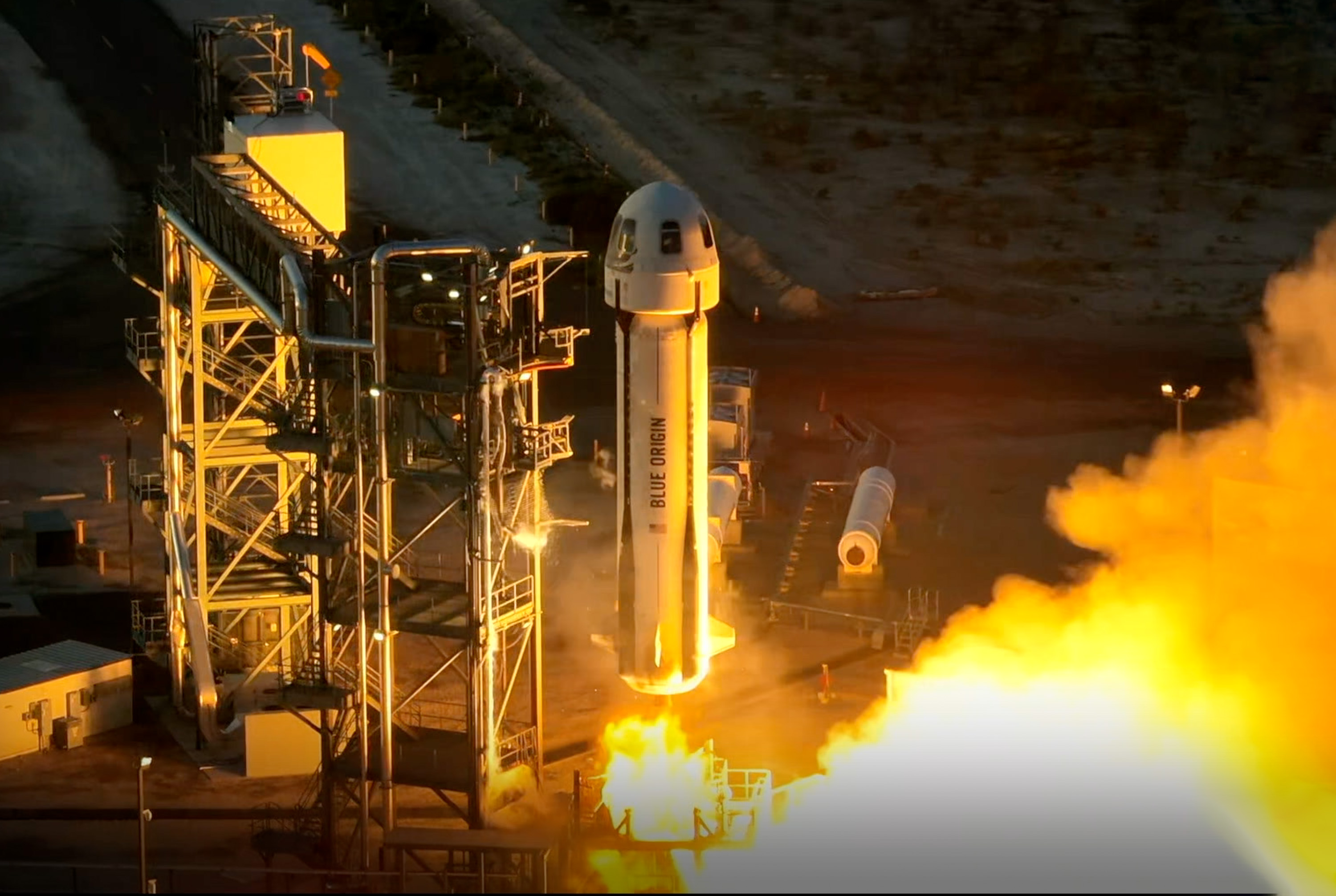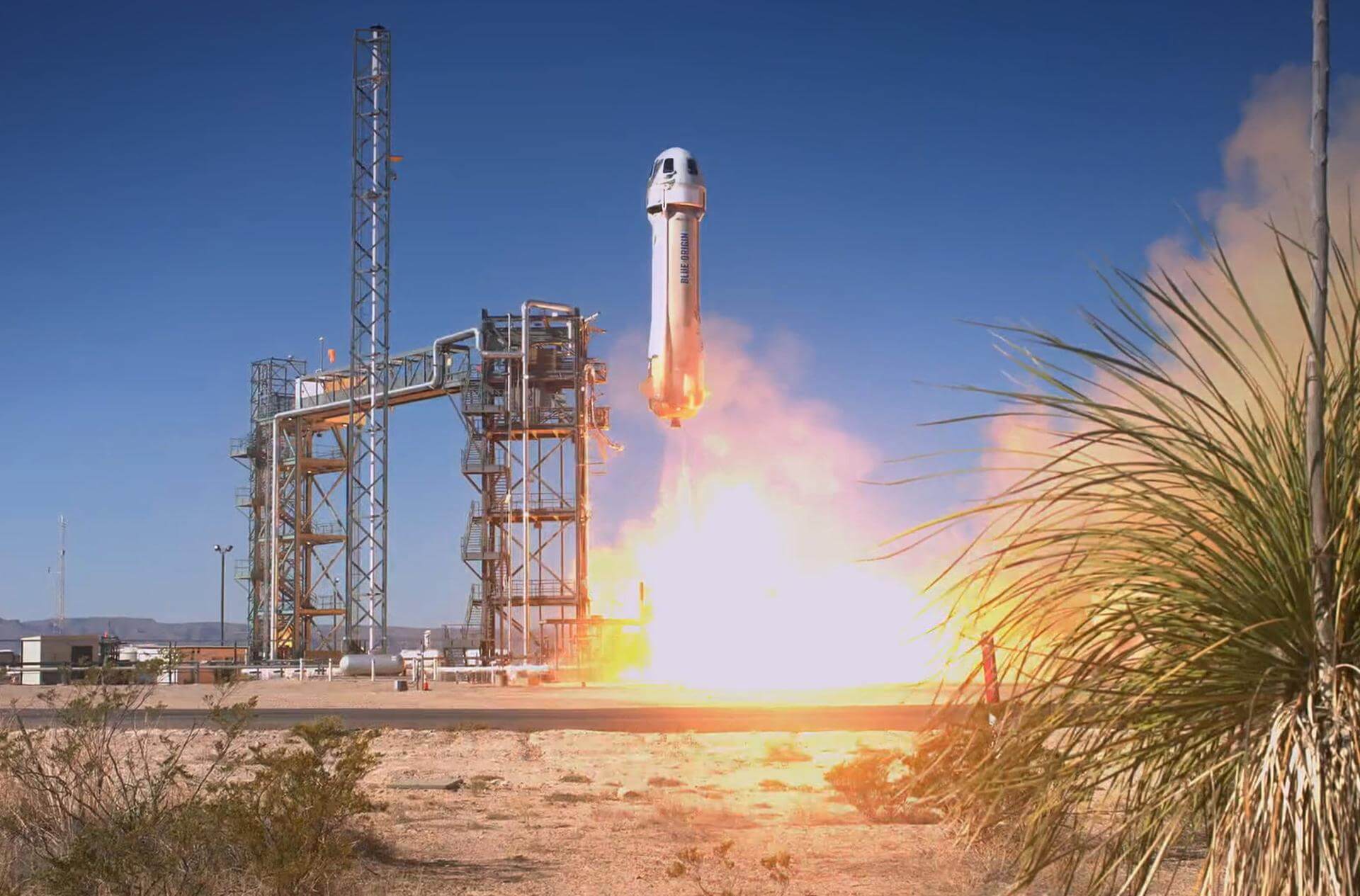
New Shepard - NS-5
Details
Status - Active
5th New Shepard booster.
New Shepard | NS-35
Blue Origin | United States of AmericaCorn Ranch, Van Horn, TX, USA
Sept. 18, 2025, 1 p.m.
Status: Launch Successful
Mission:
NS-35 is the 35th flight for the New Shepard program. This flight will fly more than 40 scientific and research payloads to space and back, including 24 experiments from NASA’s TechRise Student Challenge and payloads for Johns Hopkins Applied Physics Laboratory, Oklahoma State University, University of Florida, Carthage College, University of Central Florida, Teledyne, Space Lab Technologies, and Teachers in Space, among others.
Suborbital NS-5 - Flight Proven ( ) Corn Ranch Landing Pad, West TexasNew Shepard | NS-33
Blue Origin | United States of AmericaCorn Ranch, Van Horn, TX, USA
June 29, 2025, 2:39 p.m.
New Shepard | NS-31
Blue Origin | United States of AmericaCorn Ranch, Van Horn, TX, USA
April 14, 2025, 1:30 p.m.
New Shepard | NS-29
Blue Origin | United States of AmericaCorn Ranch, Van Horn, TX, USA
Feb. 4, 2025, 4 p.m.
Status: Launch Successful
Mission:
NS-29 will simulate the Moon’s gravity and fly 30 payloads, all but one of which is focused on testing lunar-related technologies. The payloads will experience at least two minutes of lunar gravity forces, a first for New Shepard and made possible in part through support from NASA. The flight will test six broad lunar technology areas: In-situ resource utilization, dust mitigation, advanced habitation systems, sensors and instrumentation, small spacecraft technologies, and entry descent and landing. Proving out these technologies at lower cost is another step toward Blue Origin’s mission to lower the cost of access to space for the benefit of Earth. It also enables NASA and other lunar surface technology providers to test innovations critical to achieving Artemis program goals and exploring the Moon’s surface. The New Shepard crew capsule is using its Reaction Control System (RCS) to spin up to approximately 11 revolutions per minute. This spin rate simulates one-sixth Earth gravity at the midpoint of the crew capsule lockers. In simulated lunar gravity, customers can accelerate their learning and technology readiness for lunar payloads at much lower cost.
Suborbital NS-5 - Flight Proven ( ) Corn Ranch Landing Pad, West TexasNew Shepard | NS-27
Blue Origin | United States of AmericaCorn Ranch, Van Horn, TX, USA
Oct. 23, 2024, 3:27 p.m.
Kinetica 1
9 satellites
Launch Area 130 - Jiuquan Satellite Launch Center, People's Republic of ChinaShare ride of 9 satellites to sun-synchronous orbit: * Satellite 813 (United Arab Emirates) * Jilin-1 Gaofen 07B-01/07C-01/07D-01 * Dongpo-15 …
Falcon 9
NROL-77
Space Launch Complex 40 - Cape Canaveral SFS, FL, USAClassified payload for the US National Reconnaissance Office.
Long March 3B/E
TJSW-22
Launch Complex 3 (LC-3/LA-1) - Xichang Satellite Launch Center, People's Republic of ChinaChinese classified satellite claimed to be for communication technology test purposes. Actual mission not known.
Long March 4B
Yaogan 47
Launch Area 94 (SLS-2 / 603) - Jiuquan Satellite Launch Center, People's Republic of ChinaThe Yaogan 47 is a Chinese military “remote sensing” satellite of unknown purposes.
Falcon 9
Starlink Group 6-92
Launch Complex 39A - Kennedy Space Center, FL, USAA batch of 29 satellites for the Starlink mega-constellation - SpaceX's project for space-based Internet communication system.



